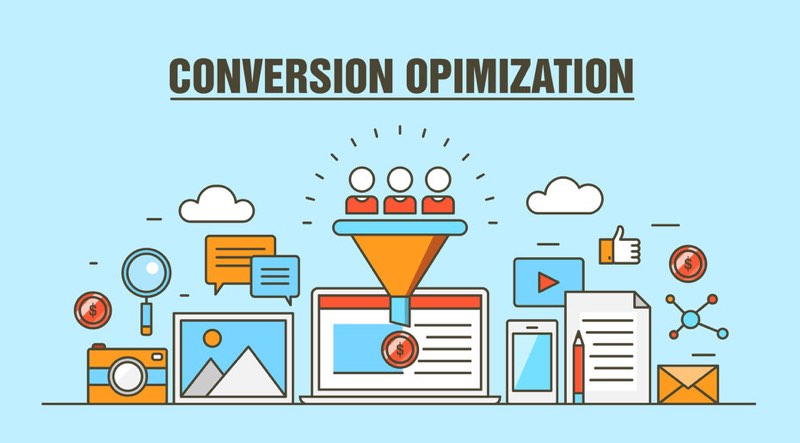Topic:
Content Marketing
There is a maxim in startup culture that is attributed to Uri Levin, founder of Waze. It says that you should, "fall in love with the problem, not the solution, and the rest will follow." The essential purpose of problem solving is to find solutions that you do not already have.
Inbound marketers can use the problem-solving mindset as the basis for a disciplined process to find highest conversion rate for marketing and sales funnels. Starting with the best initial conditions you can experiment until you find the peaks of conversion rate optimization.
In the reality of dynamic marketplaces, content marketers know that means testing content against traffic continuously as the peaks shift in response to disruptions and innovations as markets and customer demands evolve.
The smartest brands see their presence as part of a dialogue with the audience. One of the home truths of advertising and sales copy is that subtle alterations in the content of your published materials have an unpredictable impact on the return you get for your marketing investment.
The critical feature of the process is how you test the elements of your presence and content to achieve better responses. Form hypotheses as if they are questions, post them as statements of A/B tests or more elaborate multivariate tests in your content, and then measure the responses with analytics to reveal the hidden high spots in your conversion rates.
Set your goals such as such things as how to maximize click-through rates, email subscriber sign up conversion, or reduce your customer shopping-cart abandonment rate. Find the problem that you wish to address and set your measurements to capture data. The more precise and specific your measurements, the easier it will be to generate improvements.
The more traffic your content or application gains, the more options you have to explore to find the highest conversion rates. Once you generate enough traffic, either by attracting it passively with search engine optimized content or actively by purchasing PPC advertising, analytics applications capture the data from which you can determine how much benefit you receive from the changes.
If you run dozens of iterations of tests and only get a significant result occasionally, the cumulative effect will multiply your conversion rates, which makes it worth the effort. For example, a simple A/B test of green and red click-through button colors showed that twenty-one percent more visitors were willing to press a red button.
Another case study showed that removing a navigation bar doubled conversion for wedding registry sign-ups. The site had a conversion rate of three percent previously, which increased to six percent as a direct result of a successful A/B testing campaign. While these examples show specific results, the question remains, how much time do you allow for the test, and to what degree?
The answer is as long as you can; the broader the mouth of your funnel and the more precisely you segment your prospects. At some point, the returns are likely to diminish and plateau. When you reach that point, you will have to consider whether to defer further testing or try a more elaborate approach.
If your brand can muster enough traffic, you can test as many combinations of elements as you wish with multivariate testing. Simple multivariate testing needs only a few versions to deliver real results. For example, one published case study of multivariate testing was how Hyundai, the Korean car manufacturer used multivariate testing for the company’s website that served the Netherlands.
The test posted combinations of three sections of two different versions, a total of eight pages, and the winning page version increased the conversion rate 162 percent over the original version. For more combinations more time and traffic will deliver more refined results, and thorough analysis of data from testing requires statistical rigor.
For any testing process, there must be consistency and the discipline to determine which direction you will follow. While some results show clear differences, test results that are closer yield results that may cause errors of false positive and false negative interpretations. In these cases, statistical analysis is essential to determine the significance.
How brands find the highest converting configurations through the ongoing process of analyzing and A/B testing design and content. Testing all the touchpoints of the end-to-end customer experience refines the focus of your presence and improves conversion.
Solutions are not easy or obvious; it takes time and effort to test possibilities before you discover where the peaks are for conversion rate optimization. The relentless pursuit of testing will deliver the conversion that turns your leads into customers most efficiently. For help optimizing your marketing and sales funels, please reach out to Bristol Strategy for assistance and advice. To learn more about us, please check out the eBook that describes how we revitalize marketing.
Bristol Strategy is a full funnel inbound marketing agency and inbound sales agency offering the full complement of Inbound Marketing services that enable our clients to surpass their business objectives by transforming the way they engage with their buyer on-line. Reach out to us to learn more about how our experience and capabilities can help your business grow.
Image Copyright: 123RF Stock PhotoAsk us about our unique approach that creates a full-funnel "inbound" engagement model for your business that attracts and converts digitally engaged prospects.